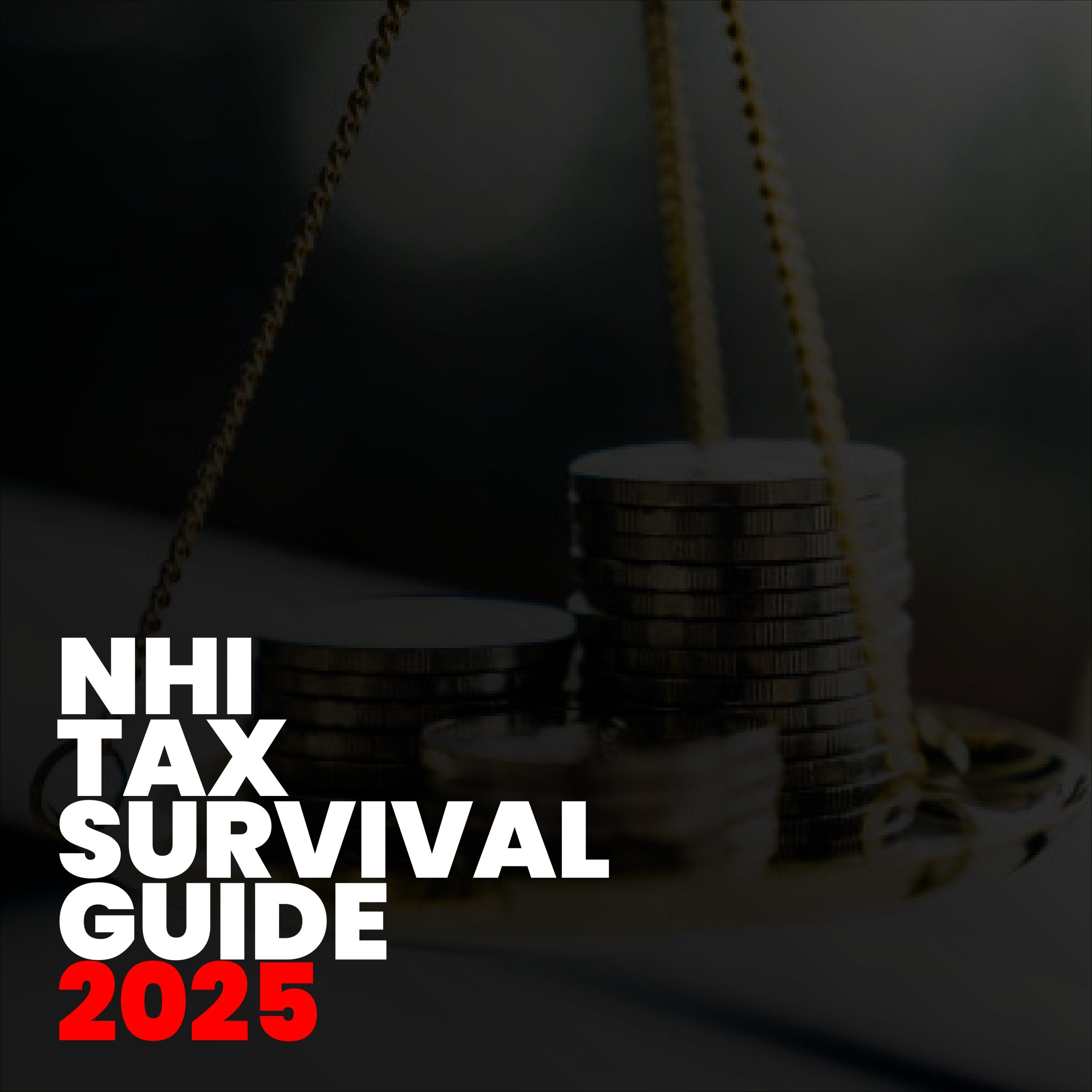Introduction
The debate over NHI Tax touches every household that plans for doctors’ visits, chronic medicine, or hospital cover. While policies will roll out in phases, families and employers need a clear action plan now. This guide explains what to watch, how to model costs, and where practical safeguards make the biggest difference. You’ll find straightforward steps for members, caregivers, and small businesses. The aim is simple: maintain access to care, avoid surprises, and keep your budget resilient as rules evolve.
NHI Tax and What the Funding Idea Means
NHI Tax is shorthand for possible revenue tools that would finance a universal pool for essential health services. Government can combine instruments such as re-prioritised budgets, income surcharges, or payroll-linked contributions. The logic is risk pooling: large groups can buy care more efficiently. Supporters say a unified buyer reduces duplication and strengthens primary care. Critics worry about timing, affordability for middle earners, and execution capacity. Whatever your view, it helps to separate principle from practice—funding design, rollout pace, and measurable service standards will determine whether the promise translates into everyday improvements.
NHI Tax and Medical Aid Credit Changes
NHI Tax discussions often include phasing out medical aid tax credits and redirecting that relief into the national fund. For members, that could lift effective monthly costs unless schemes respond with tighter networks or redesigned options. For schemes, the challenge is preserving value as incentives shift. A gradual phase-in with clear dates reduces budget shocks. Keep an eye on your plan’s annual contribution circulars, broker briefings, and employer updates. Early information lets you compare benefits calmly, rather than scrambling during renewal windows when choices feel rushed.
NHI Tax and Building a 12-Month Cost Model
NHI Tax planning starts with a simple spreadsheet. List current contributions, gap cover, typical co-pays, and chronic meds. Then model three paths: credits unchanged, credits halved, credits removed. Add surcharge scenarios at 0.5%, 1%, and 2% of taxable income to test sensitivity. Note dependants and high-priority services like maternity or dialysis. Create a buffer equal to one month of total health spend to absorb policy shifts. Update the model quarterly as official documents appear. A written plan beats guesswork and keeps your decisions grounded in numbers, not headlines.
NHI Tax and Picking the Right Plan Type
NHI Tax could nudge members to reassess plan design. Comprehensive options offer broader specialist access but higher contributions. Network hospital plans control premiums by narrowing facility choice. Savings-rich options suit frequent GP or dental use, while pure hospital plans fit low utilising families that want catastrophe protection. Ask for a side-by-side comparison showing total annual cost, network rules, and co-payments. Confirm that your current GP and nearest emergency unit are in network. If you change tiers, double-check chronic disease lists and pre-authorisation so long-running treatments remain uninterrupted.
NHI Tax and Employer Actions That Affect You
NHI Tax may arrive alongside payroll-linked contributions, prompting HR to rethink benefits. Employers could adjust subsidies, change default options, or add voluntary top-ups for higher earners. If you’re staff, read every memo and ask for total-cost-to-company illustrations under different levy rates. If you manage teams, schedule short clinics with a licensed broker, prioritising chronic care continuity and emergency pathways. Pair benefit design with wellness programmes—hypertension checks, diabetes coaching, mental health support. Healthy teams reduce admissions and stabilise spend, which matters during any funding transition.
NHI Tax and Provider Contracting in Practice
NHI Tax revenue only helps if purchasing is efficient. Primary care may shift to capitation with quality incentives for vaccination coverage or blood-pressure control. Hospitals may use case-based payments linked to outcomes. For patients, the practical issue is continuity: consistent referral pathways, stocked pharmacies, and reliable lab turnaround. Keep a digital folder with scripts, results, and referral letters so switching networks doesn’t restart your diagnostic journey. Ask clinics about telemedicine slots and electronic records. Good documentation saves time and money regardless of how the funding instruments evolve.
NHI Tax and Safeguards for Chronic and Vulnerable Patients
NHI Tax should translate into stable care for those with long-term conditions. If you manage diabetes, HIV, cancer, or a disability, prioritise uninterrupted treatment. Confirm repeat-script rules, delivery options, and emergency pathways in your chosen plan. Keep a current list of specialists and contact details. Caregivers should map transport and backup pharmacies, especially for children and elders. If contributions rise, consider trimming non-essential benefits while protecting chronic cover. Continuity is the anchor—preserve it first, then optimise everything else.
NHI Tax and Using Technology to Cut Friction
NHI Tax could accelerate digital upgrades. Patient apps for bookings, e-prescriptions, and results reduce queues and missed visits. Supply-chain systems can curb stock-outs. When comparing options, ask about online claims, chat triage, and virtual follow-ups. Verify data protection standards and keep your own records backed up in the cloud. A few simple habits—photo-scanning scripts, saving PDFs, sharing secure links with providers—make transitions smoother and reduce repeat tests. Technology cannot replace bedside care, but it can make each visit faster, clearer, and cheaper.
NHI Tax and Reading Policy Signals Without Panic
NHI Tax news moves quickly, but reliable signals are limited. Focus on published regulations, treasury notes, and health department circulars. Scan reputable media that cite source documents. Ignore anonymous posts without references. Track a short list of numbers that matter to you: contribution changes, levy thresholds, and benefit definitions. Set quarterly reminders to revisit those figures. If you run a small business, join an industry association for briefings. Calm monitoring turns noise into usable information and keeps decisions steady.
NHI Tax and Your Year-End Checklist
NHI Tax preparation is easier with a repeatable routine. Confirm your plan for the next benefit year and capture total annual cost. Verify your GP and nearest emergency hospital are in network. Renew chronic authorisations early and update scripts. Set aside a savings buffer for co-pays. Schedule preventive screenings you’ve postponed. Store digital copies of key records and share them securely with caregivers. Ask HR to confirm payroll settings before January. Book a broker review if your family situation changed. A consistent checklist maintains access and avoids last-minute stress.
FAQs
What is NHI Tax in simple terms?
NHI Tax refers to potential taxes or levies used to fund a national pool for essential healthcare services.
Will NHI Tax end private medical aid?
NHI Tax is expected to shift private cover toward complementary benefits rather than eliminate it.
How can households prepare for NHI Tax now?
NHI Tax planning starts with a 12-month budget model, network checks, chronic continuity, and verified official updates.
Conclusion
NHI Tax may reshape health financing, but preparation keeps care stable. Build a written budget, confirm networks, protect chronic treatment, and use digital tools to cut friction. Follow official documents rather than rumours, and update your plan when real numbers arrive. With steady steps and clear information, families and employers can protect access and manage costs while policy makers phase in the system.




